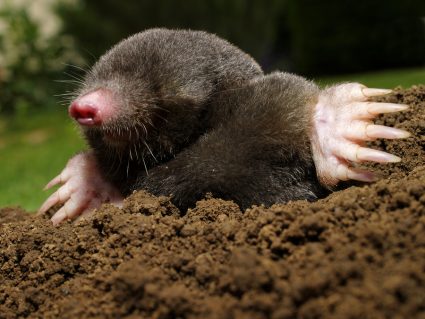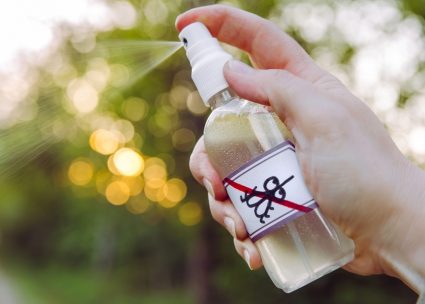
Frogs, while beneficial to the ecosystem, can sometimes become a nuisance when they take up residence in our fountains. Their croaking can become disruptive, and their waste can lead to water quality issues. If you’re wondering how to keep frogs out of your fountain, this comprehensive guide will provide you with practical and effective methods, as well as some insight into why frogs are attracted to fountains in the first place.
To keep frogs out of your fountain, you can use natural repellents like salt or vinegar, install motion-activated lights, surround the fountain with prickly plants, or introduce fish like goldfish or koi which are natural predators of frogs. If frogs are already present, you can safely remove them using a net or by physically removing them with gloves. Ensure to eliminate food sources, improve water drainage, and modify the habitat to make it less attractive to frogs.
Why Are Frogs Attracted to Fountains?
Frogs are attracted to fountains for several reasons:
- Water and Moisture: Frogs require water for survival. They drink, breathe, reproduce, and lay eggs in water. Fountains, with their constant supply of water, are an ideal habitat.
- Food Supply: Fountains often attract insects, a primary food source for frogs. The presence of insects makes fountains an attractive hunting ground.
- Shelter and Security: Fountains often have shallow pools and surrounding vegetation, providing frogs with shelter and a sense of security.
- Breeding Grounds: Frogs lay their eggs in water, and fountains can serve as suitable breeding grounds.
- Sound of Running Water: Frogs are drawn to the sound of running water, which fountains often produce.
Potential Issues Caused by Frogs
Frogs in your fountain can cause a few issues:
- Water Quality: Frogs can introduce waste and other organic materials into the fountain, leading to algae growth and poor water quality.
- Clogging and Damage to Pumps: Frogs can get sucked up by unprotected pumps, causing blockages and potential damage.
- Spread of Parasites and Bacteria: Frogs can spread parasites and bacteria, potentially affecting other wildlife and the overall ecosystem.
- Noise: A large number of frogs can create loud croaking sounds, which may disturb nearby residents.
Effective Methods to Deter Frogs from Fountains
Here are some strategies to keep frogs away from your fountain:
- Eliminate Water Features: Remove any water features that may attract frogs, such as ponds and bird baths.
- Use Natural Repellents: Spread substances that frogs dislike, such as salt, coffee grounds, baking soda, vinegar, or peppermint oil, around the fountain.
- Install Motion-Activated Lights: Frogs are nocturnal creatures. Installing motion-activated lights near your fountain can deter them from approaching at night.
- Surround with Prickly Plants: Frogs dislike prickly surfaces. Surround your fountain with plants like cacti and thorny shrubs.
- Introduce Fish: Some types of fish, such as goldfish and koi, are natural predators of frogs. Adding a few fish to your fountain can control the frog population.
Safe, Non-Harmful Ways to Remove Frogs
If frogs are already present in the fountain, here are some safe and non-harmful ways to remove them:
- Catch the Frogs with a Net: Use a butterfly net to capture the frogs one by one. Once you catch them, relocate them to a suitable area nearby.
- Physically Remove the Frogs: Carefully pick up the frogs using gloves and place them in a container for relocation.
- Eliminate Food Sources: Reduce the insect population in your yard to make the area less attractive to frogs.
- Improve Water Drainage: Addressing water drainage issues and clearing out standing water areas will keep your yard dry and less attractive to frogs.
- Modify the Habitat: Trim your grass regularly and keep plants well-maintained to reduce hiding places for frogs.
- Install a Barrier: Set up fine-mesh fencing around the fountain to prevent frogs from accessing it.
Conclusion
While frogs play an essential role in our ecosystem, their presence in our fountains can sometimes become a nuisance. By understanding why frogs are attracted to fountains and implementing the methods listed above, you can effectively keep frogs out of your fountain. Remember to always use humane methods when dealing with these creatures and check your local laws concerning frog removal and relocation.
Frequently Asked Questions
Can frogs harm people or pets?
Generally, most common species of frogs pose no direct threat to humans or pets. However, some species produce toxins that can cause irritation or allergic reactions. Always handle frogs with care and wash your hands afterward.
Are there any legal restrictions on removing frogs?
Yes, in some areas, certain species of frogs are protected by law and it’s illegal to harm or relocate them. Always check your local wildlife regulations before attempting to remove frogs.
Can I use pesticides to control the frog population?
It’s not advisable to use pesticides to control frogs as these can harm other wildlife and disrupt the ecosystem. It’s better to use natural, non-harmful methods as outlined in this article.
How quickly can frogs reproduce in my fountain?
The reproduction rate of frogs can vary depending on the species and environmental conditions. However, most common frog species can lay hundreds of eggs at a time, which can hatch in a matter of days.
Is the noise made by frogs harmful?
The croaking noise made by frogs is not harmful, but it can be disruptive and annoying, especially at night when frogs are most active. If the noise is a problem, you may want to consider some of the frog deterrent methods mentioned above.









